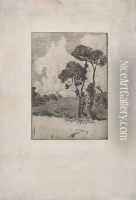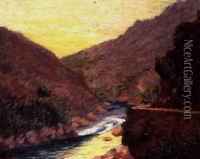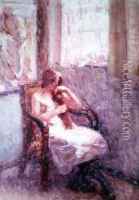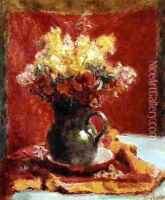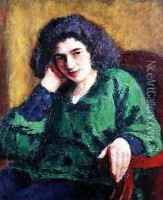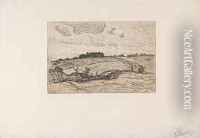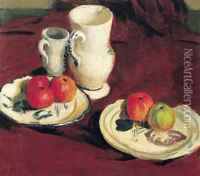Roderic O'Conor Paintings
Roderic O'Conor was an Irish painter, born on October 17, 1860, in Milltown Castle, County Roscommon, Ireland. He is best known for his landscapes, still lifes, and portraits, as well as for his bold use of color and innovative painting techniques that linked him with the Post-Impressionist movement. O'Conor's early education in art began at the Metropolitan School of Art in Dublin, and he furthered his studies at the Royal Hibernian Academy. Seeking broader horizons and the company of contemporary avant-garde artists, he moved to Antwerp in 1883, where he attended the Royal Academy of Fine Arts, and later to Paris, where he was influenced by the works of the Impressionists and the bold colors of the Pont-Aven School.
In the late 1880s, O'Conor relocated to Brittany, where he became closely associated with the Pont-Aven School, a group of artists known for their experimental approach to color and form. It was here that O'Conor developed his distinctive style, characterized by vibrant color palettes and dynamic brushwork, which set his work apart from his contemporaries. During this period, he formed a significant friendship with Paul Gauguin, whose influence is evident in O'Conor's use of color and thematic exploration.
Throughout the 1890s and the early 20th century, O'Conor traveled extensively across Europe, absorbing influences and honing his artistic approach. His works from this period show a maturation of his style, with a focus on landscapes and still lifes that capture the essence of his subjects through color and form rather than detailed realism. O'Conor's landscapes of the French countryside and his still lifes are particularly noted for their rich, emotive color schemes and the sense of tranquility they evoke.
Despite his success and the esteem in which he was held by his contemporaries, O'Conor remained relatively unknown to the wider public for much of his career. It was not until after his death in Paris on March 18, 1940, that his contributions to Post-Impressionism and modern art were fully recognized. Today, Roderic O'Conor is celebrated as a pioneering figure in the development of modern Irish art, with his works held in high regard and featured in many major art collections and museums around the world.


